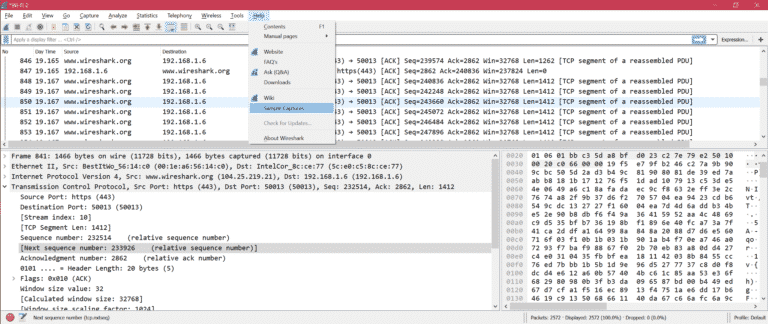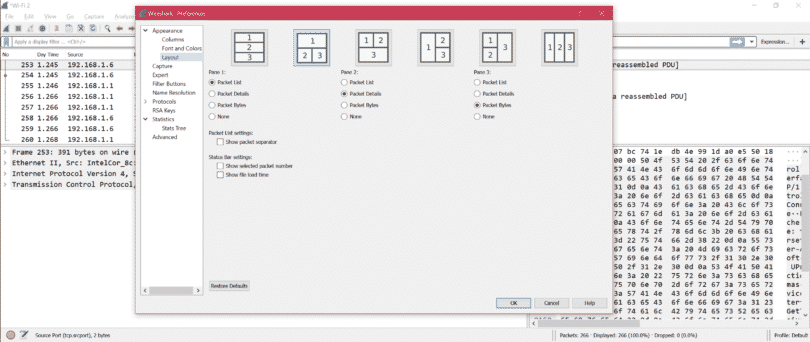
- SETTING UP WIRESHARK LINUX TO CAPTURE PACKETS INSTALL
- SETTING UP WIRESHARK LINUX TO CAPTURE PACKETS DRIVERS
- SETTING UP WIRESHARK LINUX TO CAPTURE PACKETS DRIVER
(This must be run as Administrator under Vista.)
SETTING UP WIRESHARK LINUX TO CAPTURE PACKETS DRIVER
In the driver properties you can set the startup type as well as start and stop the driver manually.įrom the command line you can run sc config npf start= auto
SETTING UP WIRESHARK LINUX TO CAPTURE PACKETS DRIVERS
You can change the start settings of the NPF service to "automatic" or "system" at any time using the following methods:įrom the Device Manager you can select View->Show hidden devices, then open Non-Plug and Play Drivers and right click on NetGroup Packet Filter Driver. The easiest way to do this is to select Start WinPcap service "NPF" at startup in the Wireshark installer. Start the NPF driver automatically at system start There are three possible solutions to start Wireshark with the privilege to capture:ĭisadvantage: It's very unsecure running Wireshark this way as every possible Wireshark exploit will be running with the administrator account being able to compromise the whole system. Please note that this is not a limitation of the Wireshark implementation, but of the underlying WinPcap driver see this note in the WinPcap FAQ. It might not be desirable that any local user can also capture from the network while the driver is loaded, but this can't be currently circumvented. Note: Simply stopping Wireshark won't stop the WinPcap driver! Once the driver is loaded, every local user can capture from it until it's stopped again. The WinPcap driver (called NPF) is loaded by Wireshark when it starts to capture live data. If you are running inside a virtual machine, make sure the host allows you to put the interface into promiscous mode.


If the usbmon interfaces don't appear in Wireshark, look for interfaces using dumpcap (the command-line tool of Wireshark): See () for more information about this differentiation.

Sudo mount -t debugfs / /sys/kernel/debugįor kernel version 2.6.21 and later, load the loadable module usbmon in the Kernel: `sudo modprobe usbmon` To know the version of your kernel, type:įor versions of the kernel prior to 2.6.21, if debugfs is not already mounted on /sys/kernel/debug, ensure that it is mounted there by issuing the following command: This step depends on the kernel version that is installed on your machine. Important: Logout of your session, then log back in. If not, you can add the group "wireshark" manually:Īnd then add your username to the group (see above) You can verify if it’s done correctly by displaying the groups your username is part of: Reconfigure wireshark to allow non-superusers to track packets:Īdd your username to the "wireshark" usergroup:
SETTING UP WIRESHARK LINUX TO CAPTURE PACKETS INSTALL
Sudo apt-get install wireshark libpcap0.8įor Debian, Ubuntu and other Debian derivatives, continue to step 3.įor other Linux based systems or other installation methods, see the Wireshark Wiki, then go to step 6. When you restart your computer, you have to repeat steps 6 and 7 to see the USB interfaces in Wireshark. The first time you follow the tutorial, do all the steps 1 -> 7. Tested on Ubuntu 14.04, but probably works on other distributions since none of the steps are specific to Ubuntu.


 0 kommentar(er)
0 kommentar(er)
